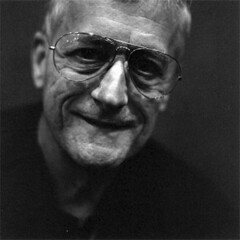
Dr. Douglas Engelbart was born on January 30, 1925 in Oregon. He is an acclaimed inventor, best known for inventing the computer mouse and is a pioneer of human-computer interaction. He also worked within the team who developed hypertext, networked computers, and precursors to GUIs (Graphical User Interfaces).
In the late 1940’s, Douglas Engelbart read a book by Vannevar Bush called "As We May Think." He became an early believer in Bush's idea of a machine that would aid human cognition. Later he began the Augmentation Research Centre (ARC), a development environment at the Stanford Research Institute and the On-Line System (NLS), the world's first implementation of what was to be called hypertext.
The key tools that NLS provided were:
• outline editors for idea development
• hypertext linking
• tele-conferencing
• word processing
• user configurability and programmability
The development of these required the creation of:
• the mouse pointing device for on-screen selection
• a one-hand chording device for keyboard entry
• a full windowing software environment
• on-line help systems
• the concept of consistency in user interfaces
Throughout his career he has continued to be a committed and vocal ambassador of the development and use of computers and networks to help provide answers to some of the world's increasingly more urgent and complex problems. Engelbart's work directly influenced the research at Xerox's PARC, which in turn was the inspiration for Apple Computers. Ted Nelson cites him as a major influence. In 1991, Engelbart and his colleagues were given the ACM Software System Award for their work on NLS.
Links of Interest
http://sloan.stanford.edu/mousesite/1968Demo.html
http://www.ibiblio.org/pioneers/englebart.html
http://en.wikipedia.org/wiki/Doug_Englebart
Ted Nelson

Theodor Holm Nelson was born June 17, 1937. He is an American sociologist, philosopher, and pioneer of information technology. Ted Nelson is a somewhat controversial figure in the computing world. For thirty-something years he has been having grand ideas but has never seen them through to completed projects. His biggest project, Xanadu, was to be a world-wide electronic publishing system that would have created a sort universal libary for the people.He is known for coining the term "hypertext." The main thrust of his work has been to make computers easily accessible to ordinary people. His motto is “A user interface should be so simple that a beginner in an emergency can understand it within ten seconds.”
In 1960, he enrolled in graduate school at Harvard. During his first year he attempted a term project creating a writing system similar to a word processor, but that would allow different versions and documents to be linked together nonlinearly, by association.
Nelson did not complete the project, but he continued to work on it after that semester and it became the overriding concern of his life. In 1965, he presented a paper at the Association for Computing Machineryin which he coined the term hypertext. Nelson's system was very similar to that envisioned by Vannevar Bush.
Xanadu
Nelson continued to expound his ideas, but he did not possess the technical knowledge to tell others how his ideas could be implemented, and so many people simply ignored him (and have ever since). Still, Nelson persisted. In 1967, he named his system XANADU, and with the help of interested, mainly younger, computer hacks continued to develop it.

Xanadu was concieved as a tool to preserve and increase humanity's literature and art. Xanadu would consist of a world-wide network that would allow information to be stored not as separate files but as connected literature. Documents would remain accessible indefinitely. Users could create virtual copies of any document. Instead of having copyrighted materials, the owners of the documents would be automatically paid via electronic means a micropayment for the virtual copying of their documents.
Xanadu has never been totally completed and is far from being implemented. In many ways Tim Berners-Lee World Wide Web is a similar, though much less grand, system. In 1999, the Xanadu code was made open source.
Links of Interest
Interview with Ted Nelson –
http://www.invisiblerevolution.net/ted-bar-it/dimensions-attr.html
http://xanadu.com.au/ted/









